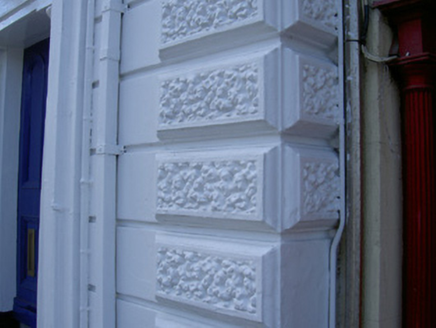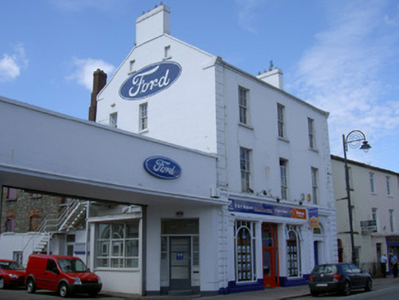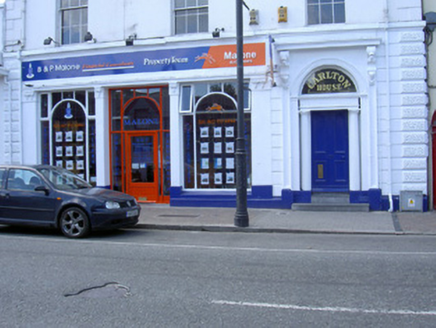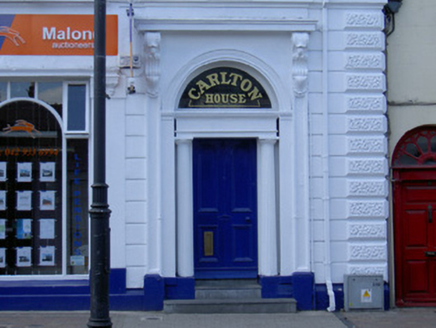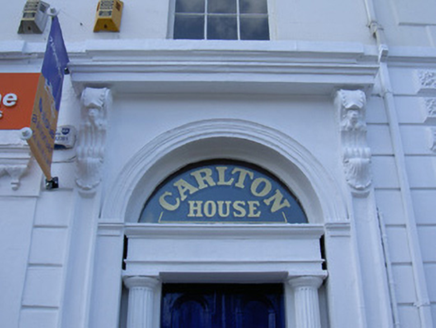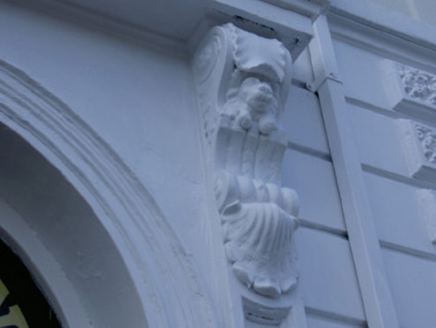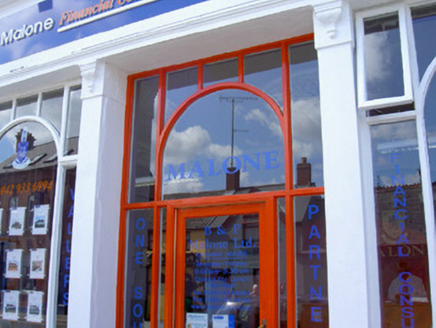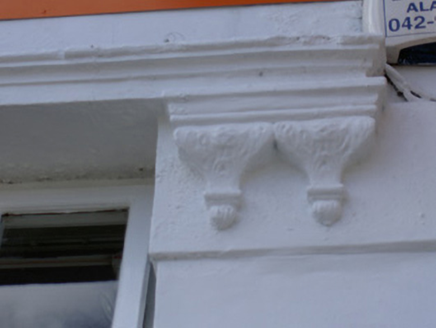Survey Data
Reg No
13707045
Rating
Regional
Categories of Special Interest
Architectural, Artistic
Original Use
House
In Use As
Office
Date
1830 - 1850
Coordinates
304587, 306891
Date Recorded
10/08/2005
Date Updated
--/--/--
Description
Attached three-bay three-storey with attic former house, built c. 1840, now in use as offices. Attached to house to north and former industrial building to west. Pitched slate roof, painted smooth rendered corbelled chimneystacks, painted stone verge coping, moulded uPVC gutters on smooth rendered corbelled eaves course, uPVC downpipe. Painted smooth rendered ruled-and-lined walling, block-and-start raised quoins to east elevation, continuous sill course to first floor, moulded kneelers to gables; channelled render walling to ground floor east elevation, painted projecting plinth, chamfered quarry-faced straight quoins. Square-headed window openings, painted stone sills, painted timber six-over-six sliding sash windows, ogee horns to second floor windows. Round-headed door opening to east elevation flanked by moulded render panelled pilasters on stone plinths with console brackets supporting projecting cornice, moulded render surround to arch supported on corbels; moulded render doorcase comprising engaged fluted Doric columns on stone plinths supporting plain fascia and cornice; painted timber four-panel door with round-headed top panels, plain-glazed fanlight with painted lettering "CARLTON HOUSE", limestone steps. Painted smooth rendered shopfront with moulded cornice on decorative corbels, plastic fascia; square-headed display windows, flush sills, painted timber windows with opening top lights; square-headed door opening to centre, painted timber and glazed door with sidelights and timber traceried overlight.
Appraisal
This handsome structure has an imposing presence within the streetscape of Dublin Street due to its towering height over the surrounding buildings. The plain walling of its upper floors is contrasted by the rustication of the ground floor, forming an appealing composition. The elaborate entrance is also striking, with well-executed finishing such as the lions head motifs to the brackets, which add artistic interest. This building forms an important feature within the rich and varied architecture of Dundalk.
